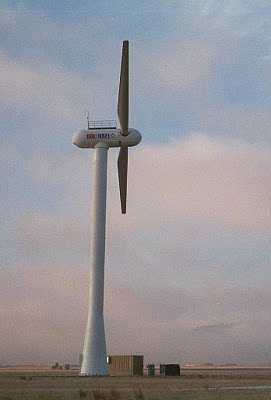Wind Energy Field Mapping Reveals: Good Potential for Energy Production from Wind Turbines in the Negev Mountains, the Judean Mountains, the Eilat Mountains and the Gulf of Eilat

Placing wind turbines in the Negev Mountains, the southeast of the Judean Mountains, the Eilat Mountains, and the Gulf of Eilat has economic and ecological potential. This is what was found in a survey conducted by Avner Porshafan, Ilan Seter and Sarah Rubin from the Meteorological Service, who mapped the wind energy field in the Negev and Arava region. In these areas there is potential for high values of wind speed and power.
However, a survey conducted as part of the "Naaman" institution at the Technion found that at the current stage there is no feasibility in placing wind turbines to generate alternative energy off the coast of Israel. The Technion researchers tested the placement of turbines in front of Erez beach in the south of Israel and in front of Hadera beaches. At each site, the researchers tested three types of turbines.
"The calculations showed that at the current stage, using existing technologies, there is no feasibility in placing the turbines off the coast of the country," explains Associate Professor Aviv Rosen from the Faculty of Aeronautics and Space Engineering. "This is due to the fact that the wind over the sea, near the coast of Israel, is relatively weak. Also, the water depths near the country's coasts are high, relative to similar sites in Europe, a fact that significantly increases the cost of construction." He emphasized, however, that land sites in the Galilee and the Golan Heights have the potential for wind turbines.
The surveys will be presented at a seminar held by a "faithful" institution of the Technion this coming Monday, with the participation of the chief scientist of the Ministry of National Infrastructures, Dr. Michael Bate. Also participating will be Dr. Avraham Arbiv, Deputy Chief Scientist and Director of the R&D Division at the Ministry of National Infrastructures, who said that wind energy is considered the closest renewable resource to economic viability.
According to Professor Aviv Rosen, Europe is the most advanced regarding the utilization of wind energy. In Denmark, the wind already provides 15-20% of the electricity consumption. A similar scope can be found in certain areas in Germany. He emphasized that despite the many advantages of wind turbines from an environmental point of view (lack of pollution), they encounter "barriers" such as damage to the landscape, possible damage to animals, noise and interference with radio and television broadcasts. "However, tests show that these disturbances are small compared to the advantages of placing the turbines", he emphasized.
